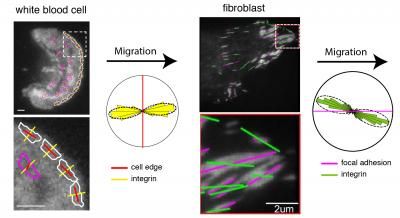Metagenomics of skin reveals insights into the human microbiome
The human body is home to a diverse range of microorganisms, estimated to outnumber human cells in a healthy adult by ten fold. The importance of characterizing human microbiota for understanding health and disease is highlighted by the recent launch of the Human Microbiome Project by the National Institutes of Health. This report, published in Genome Research, describes the investigation of healthy human skin for microbiota diversity and establishes the basis for determining a core microbiome.
The Human Microbiome Project aims to characterize the microbial communities of several regions of the body, including skin, where determining the core microbiome is essential to understanding and developing new treatments for skin conditions and diseases such as acne and atopic dermatitis (eczema). In this study, researchers led by Dr. Julie Segre of the National Human Genome Research Institute have generated a diversity profile of human skin microbiota by sequencing 16S rRNA, a component of the prokaryotic ribosome, isolated from a specific region of skin. "We focused this study on the inner elbow to inform future clinical studies of the extremely common inflammatory skin disorder atopic dermatitis, which affects this area of the skin and is associated with Staphylococcus infections," explains Segre.
The researchers find that in the healthy subjects tested, Proteobacteria (predominantly Pseudomonas and Janthinobacterium) constituted the majority of inner elbow microbiota. Furthermore, this survey indicated that a common core skin microbiome exists between these individuals. Segre adds that this finding is critical for studying disease. "Our long-term goal is to clarify the microbial contribution to a myriad of skin disorders both with known and suspected bacterial infections." Segre's group also found that the microbiota of mouse skin is comparable to that of the human inner elbow, suggesting a potential model for human skin disorders related to microbiota.
Segre explains that this work has established a foundation for answering questions about microbiota and skin disease, with the potential for novel drugs and treatments. "It's not surprising that microbes play a vital role in human health and disease," says Segre. "Unfortunately the public is conditioned to view microbes antagonistically, when in fact they may hold the key to a whole new array of therapeutic options."
Original publication: Grice, E.A., Kong, H.H., Renaud, G., Young, A.C., NISC Comparative Sequencing Program, Bouffard, G.G., Blakesley, R.W., Wolfsberg, T.G., Turner, M.L., and Segre, J.A.; "A diversity profile of the human skin microbiota."; Genome Res. 2008.
Most read news
Other news from the department science

Get the life science industry in your inbox
By submitting this form you agree that LUMITOS AG will send you the newsletter(s) selected above by email. Your data will not be passed on to third parties. Your data will be stored and processed in accordance with our data protection regulations. LUMITOS may contact you by email for the purpose of advertising or market and opinion surveys. You can revoke your consent at any time without giving reasons to LUMITOS AG, Ernst-Augustin-Str. 2, 12489 Berlin, Germany or by e-mail at revoke@lumitos.com with effect for the future. In addition, each email contains a link to unsubscribe from the corresponding newsletter.
Most read news
More news from our other portals
Last viewed contents
List_of_diseases_(L)

Sanofi to acquire Principia Biopharma - Further strengthens core R&D areas of autoimmune and allergic diseases
Category:Aromatic_amino_acids
List_of_diseases_(K)

Live-cell microscopy reveals cell migration by direct forces
P35_(gene)
New Helmholtz Institute for Metabolism Research in Leipzig
Wilson's_disease
List_of_pharmaceutical_compound_number_prefix

French startup startup transforms human urine into microbial plant biostimulants - Toopi Organics awarded €8.4M to spread urine upcycling for agriculture across the EU






















































